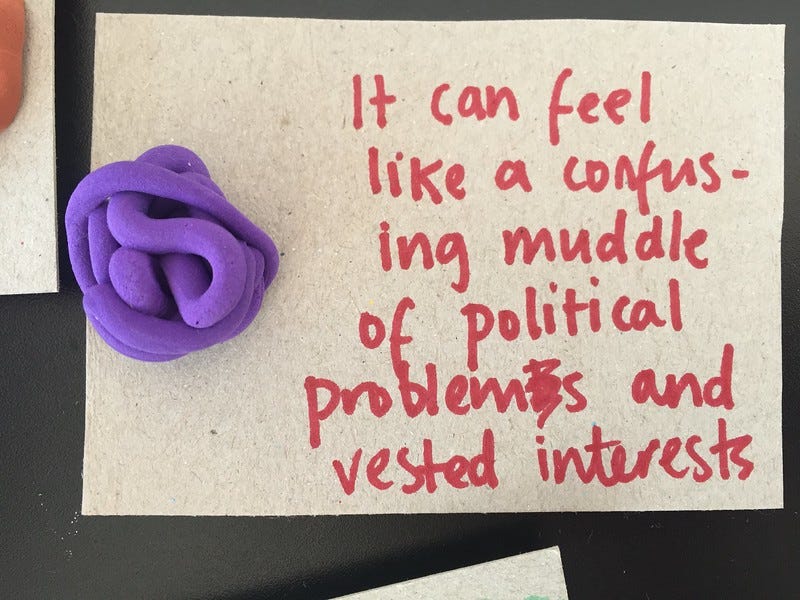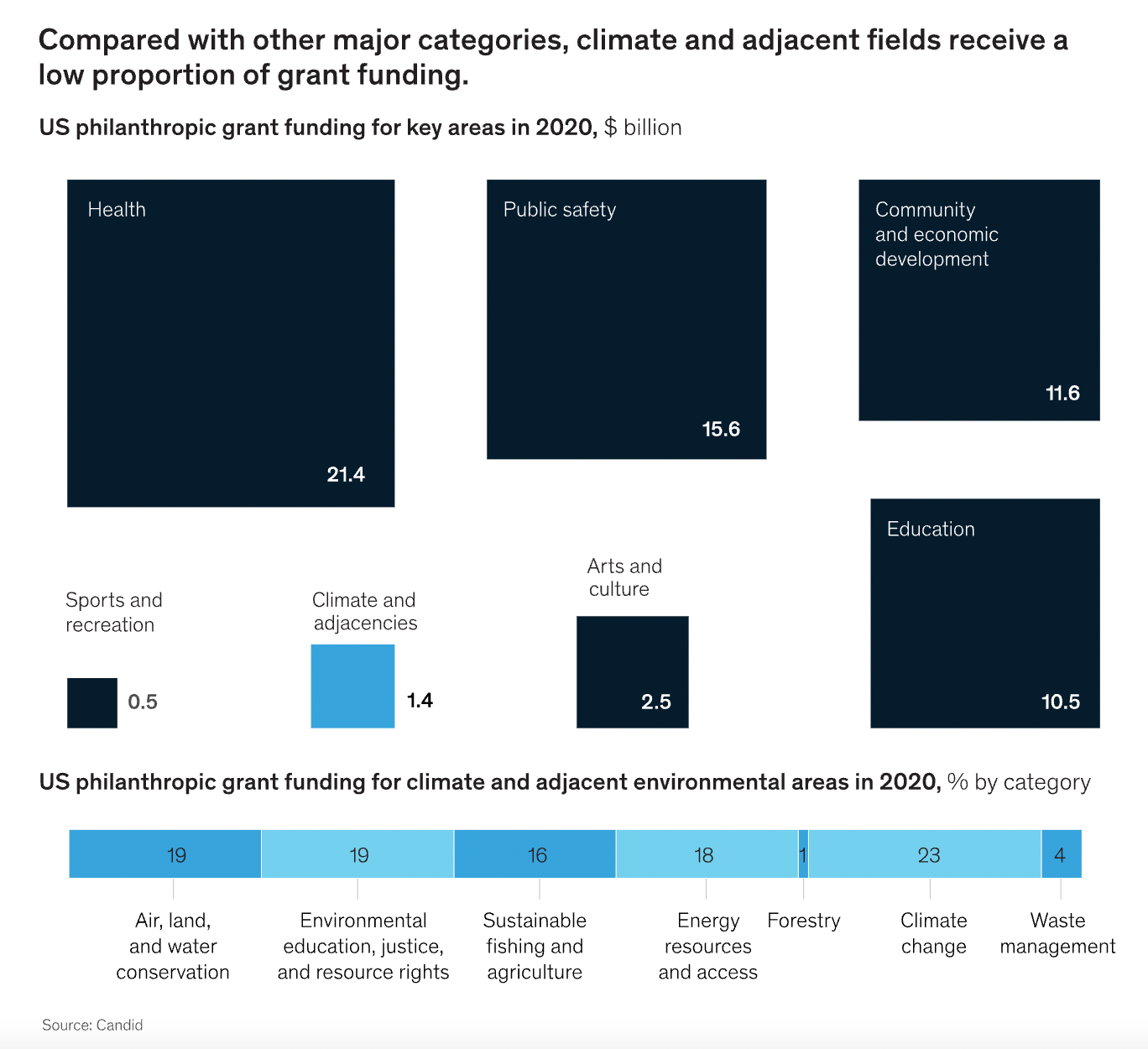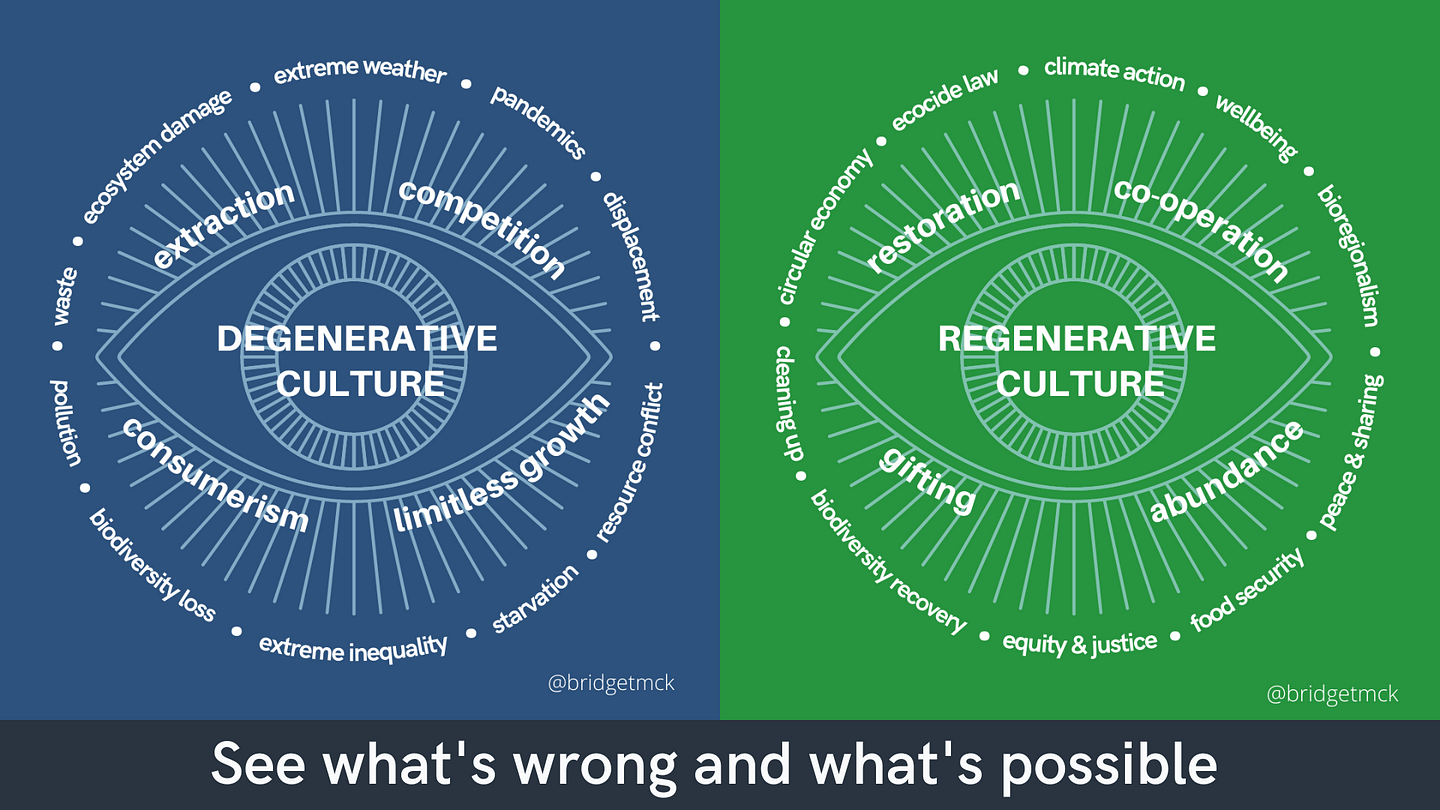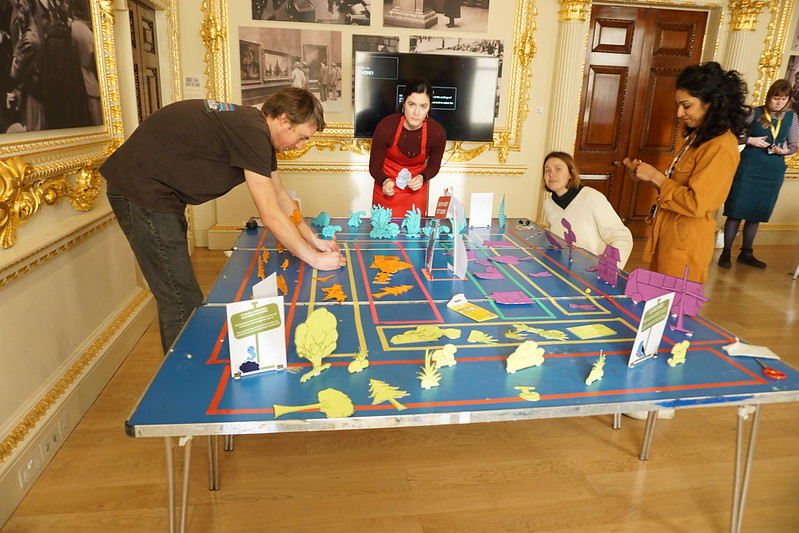
This is an experimental post, as I’m trying to explore some conundrums and challenge some truisms. It started with one of those clear-as-a-bell phrases that come to you on waking, when the dream-thinking behind it is lost. The phrase was ‘from communication to activation’. It comes from chewing around some frustrations with discourses around climate communication, their limitations and lack of impact. I’m frustrated less by the professionals and researchers thinking deeply and gathering evidence about these issues, and more by the popularisations and simplifications that are being propagated. I call this wider zone ‘Climate Communications World’.
Naming the problem
One frustration is with a lack of clarity that often occurs in naming the big environmental problem. Here, we often see a conundrum. On one hand, climate change is used as a synecdoche for the wider Earth crisis, such that intersecting factors of justice, direct ecocide, or biodiversity loss are often ignored. On the other hand, specific topics such as recycling and ocean plastic become dominant subjects when the intention or need is to deal with the precise complexities of climate change. So, I can’t be frustrated that climate either is, or isn’t, generally the focus. It’s the simplification or minimising of the whole intersecting picture, which happens for several reasons:
- Pressure to make content or discussions accessible, and pressure to squeeze into time or word count limits.
- Avoidance Coping, jumping to other topics where there is more comfort.
- The constructivist nature of sense-making, so that people gravitate to topics that have already been made familiar by media coverage.
- The tendency to focus on topics that are associated with agency to act, or quantitative targets (such as recycling, or CO2 emissions).
Dry soil, rain fails to get through
Another conundrum is that on one hand there is massive lack of investment in public engagement with environmental issues, while on the other hand there is an over-abundance of environmental initiatives and media content. So, I can’t be frustrated that there is too little AND too much environmental engagement.

The frustration is that what exists is ineffective. It’s like rain on hard ground — it’s either not enough so it dries immediately, or it’s a torrent that runs off elsewhere. Some initiatives are unwatered seeds because they are duplicating or competing with others, or they might arise in places or times lacking mental readiness to engage. Other initiatives might cost millions of pounds/dollars/euros and get people talking and reducing harmful behaviours but seem to have little system-changing impact on a global scale. Some of the reasons why communication & environmental change campaigns might be less impactful, include:
- A lack of sustained investment, so that money is wasted on short, small-scale, scattered projects. (The soil is not fertilised.)
- Individualism and a lack of social infrastructure (especially in the Global North) means that when people get motivations and ideas for campaigns, stories or content, they don’t tap effectively into or build support networks. They pursue the easiest groove — social networks. This is combined with the fact that we tend to replicate or construct from what exists, rather than look for patterns to see what is missing or possible from adjacent ideas.
- The largest investments go to communication that is comfortable, accessible or entertaining, or celebrating intact ecosystems (such as they exist), or playing on consumerist narratives, but that is avoidant of harder truths and the bigger picture.
- Inability to push back against the wealth and dirty tactics of the extractive industries, able to buy media channels, lobby politicians and influence social media to distract and confuse us. (A global eco charity might spend 10 years and £millions acting on an issue, when a wealthy industrialist via a think tank, could achieve a policy change in a few months.)
Behaviour change, or social patterns of change?
Another conundrum is that on one hand there is evidence of behaviour changes from environmental initiatives, but on the other hand the data is showing an increase in environmental harm from human actions. Even though public concern about climate and environmental issues is higher than ever, and people all over the world are being impacted more directly, we continue to hear about increasing deforestation, worsening pollution of air and water, and more new extraction projects.
My research (with others) last year on public attitudes to Sustainable Food showed that people across the UK, India and Brazil were strongly impressed by the same films, about ocean plastic, overfishing and the meat industry, to the extent that many changed their behaviour, e.g. eating more ‘sustainable fish’ or vegan products. Some content and campaigns can have global currency and impact. However, overall, harmful developments and emissions have continued to rise, as countries such as India, Brazil and Vietnam have raced for economic growth rather than environmental restoration and protection.
The possible reasons for this disconnect between some behaviour change and a rise in harm include:
- People are more influenced to change lifestyle behaviours by unconscious or pragmatic factors such as a lower price for beneficial products, or harmful products being hidden or not advertised. Messaging to ‘wake people up’ is less effective than taxes, regulations, bans and incentives.
- Social factors are central to changing behaviours. People are less influenced by messages per se, than by embodied messages emitted by people they love or admire, doing things that appear to bring them pleasure, security or attention. Words might cut through but they also need to see and hear people who touch them in some way, because they feel a sense of identity or compassion, or perhaps also competition. Change happens when there is a critical mass of people acting beneficially, and benefitting, over a sustained period, in intimate relationships or geographical proximity.
- Pushing against the power of the extractive industries (again!). The USA under Trump rolled back environmental protections and climate action. This attitude spread to their allies (such as UK and Brazil) through globally-owned media corporations and globalised corporate relationships. So many companies are outside the jurisdiction of nations anyway, and seek licence to operate (e.g. grabbing land or doing financial transactions) in countries with looser regulations.
- The bulk of recent damage is from the impacts of climate breakdown, but the focus in this piece is on harmful actions by human agents that could be minimised. That said, the shocks from impacts of extractive industries (including climate breakdown) are being used as a smokescreen, to bring in yet more harmful policies, such as more fracking.
Even reality is invisible
The final conundrum is that the geophysical world is also an invisible world. People only really see their immediate surroundings or images of the world as they wish it to be, and we attend to human life or to animals that remind us ourselves. What remains invisible is how Earth systems work, the externalities of our actions, the lives of people and beings outside our culture or element. We’re all different in what we see or forget, depending on our values (or what matters most to us, individually and communally). For example, I am guilty of forgetting life in the oceans when I think of biodiversity.
The word in Climate Communication World is that dry science doesn’t work so we need human stories, artworks, emotional connection and an appeal to people’s values. These help make the invisible visible, visceral or tangible. Evidence can be found for these things to be effective in raising people’s awareness and motivation. And I’ve spent decades talking up the power of Culture for change. BUT does it activate people? And, more importantly, does it change systems? Does it work against the power of extractive industries that now influence mass media and politics? Climate scientists sometimes argue that we don’t need more climate science, but we do need more behavioural science. But, do we really need more studies on how we receive messages, how to engage with our values and act on them?
What is needed is activation, not communication
What does that mean?
- It means that people — locked into social, economic and institutional systems — need mechanisms for understanding the paradigms of those systems, defusing them from the inside, and reconstructing them in regenerative ways.
- It means that we need to overcome the binary between the rational and the emotional. Both science and values are too abstract, and neither makes as much sense as interventions that directly affect people at the level of family, streets, jobs and services around them, so that people can tangibly know what offers benefits. We need to activate change in people’s contextual culture more than work to shift their values.
It’s not surprising that scientists tell us that what’s needed is less science (seeing that it hasn’t worked) and more emotion. In fact what’s needed is stuff that falls between these two: more risk awareness, more anticipation or speculation, more joined-up big data, more embodied evidence and practical experiment (aka science). And most importantly, people need to be involved in all of this, not just fed messages about it after the fact. They need to be involved in the uncertainties of the science and the politics, through more participation and dialogue in science research, in local democracy, in cultural programmes, in the media and in education. And if we do need more emotional content, it needs to work in a direct and remedial way to overcome our fear-based culture.
Finally, we need to help personalise work to change systems, by increasing agency of people to act responsively on external evidence and inner values, and we need to systematise personal actions. See my People Take Action framework which offers tools to do just that. Also, we can personalise by doing more ‘face-to-place’ work (face-to-face but turning towards place with an eco mindset). For example, see my Possitopia Norwich programme just launched.




